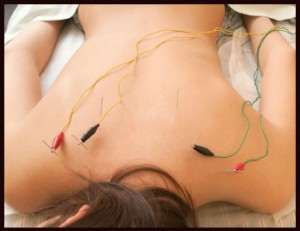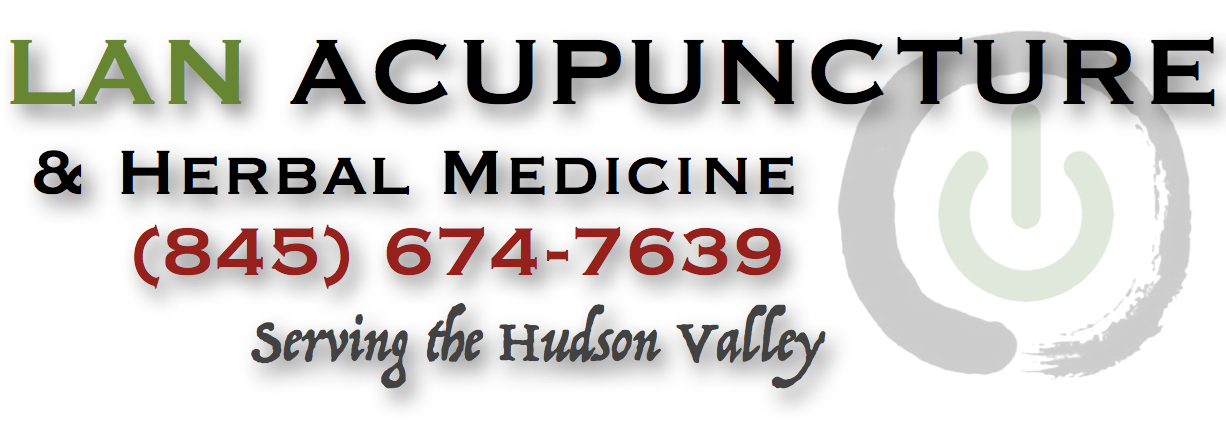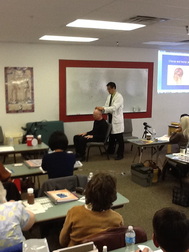What is Dry Needling?
Dry needling, also known as myofascial trigger point dry needling, is a rudimentary form of acupuncture therapy for limited range of motion, muscle pain, including pain related to myofascial pain syndrome. Dry needling is sometimes also known as Intramuscular Stimulation (IMS), or Tendinomuscular Acupuncture.

Although dry needling originally utilized only hypodermic needles due to the concern that solid needles had neither the strength or tactile feedback that hypodermic needles provided and that the needle could be deflected by “dense contraction knots”, those concerns have proven unfounded and many healthcare practitioners who perform dry needling have found that the acupuncture needles not only provides better tactile feedback but also penetrate the “dense muscle knots” better and are easier to manage and caused less discomfort to patients. For that reason, both the use of hypodermic needles and the use of acupuncture needles are now accepted in dry needling practice. Ofttimes practitioners who use hypodermic needles also provide trigger point injection treatment to patients and therefore find the use of hypodermic needles a better choice. As their use became more common, some dry needling practitioners without acupuncture in their scope of practice, started to refer to these needles by their technical design term as “solid filiform needles” as opposed to the FDA designation “acupuncture needle”.
The filiform needle used in dry needling is regulated by the FDA as a Class II medical device described in the code titled “Sec. 880.5580 Acupuncture needle” as “a device intended to pierce the skin in the practice of acupuncture”. Per the Food and Drug Act of 1906 and the subsequent Amendments to said act, the FDA definition applies to how the needles can be marketed means that acupuncture is the only medical procedure where these needles can be used. Dry needling using such a needle contrasts with the use of a hollow hypodermic needle to inject substances such as saline solution, botox or corticosteroids to the same point. In a small number of studies, the use of a solid needle has been found to be as effective as injection of substances in such cases as relief of pain in muscles and connective tissue.
Dry needling is a neurophysiological evidence-based treatment technique that requires effective manual assessment of the neuromuscular system. Licensed Acupuncturists are trained to utilize dry needling in conjunction with manual physical therapy interventions. Research supports that dry needling improves pain control, reduces muscle tension, normalizes biochemical and electrical dysfunction of motor end plates, and facilitates an accelerated return to active rehabilitation.
Dry needling for the treatment of myofascial (muscular) trigger points is based on theories intrinsic to traditional acupuncture. Dry needling targets trigger points, which is a direct and palpable source of patient pain. The complex sensation referral patterns are documented as “channels” or “meridians” in Chinese Medicine. Dry needling, and its treatment techniques and desired effects, have been well documented in classical as well as modern acupuncture literature. Dry needling theory and practice are derived from the range of traditional theories of Chinese Medicine which is used to treat not only pain but other non-musculoskeletal issues which often are the cause of pain. Trigger points are a classification of acupuncture points that describe a chronic spasm or ‘knot’ in muscle tissue, known as a ‘jumping point’ in classical literature due to the propensity of the muscle to twitch upon being stimulated.Proper dry needling of a myofascial trigger point will elicit a local twitch response (LTR), which is an involuntary spinal cord reflex in which the muscle fibers in the taut band of muscle contract. The LTR indicates the proper placement of the needle in a trigger point. Dry needling that elicits LTRs improves treatment outcomes and may work by activating endogenous opioids. The activation of the endogenous opioids is for an analgesic effect using the Gate Control Theory of Pain*. Inserting the needle is fairly painless when done by a Licensed Acupuncturist.
Who is qualified to practice Dry Needling?
Although licensure laws vary from state to state, only Licensed Acupuncturists (L.Ac.) are qualified to safely insert filiform needles into a patient. To become licensed, a practitioner must complete a 3000+ hour Masters program at an accredited college of acupuncture/oriental medicine, such as Southwest Acupuncture College, earn accreditation from the National Certification Commission for Acupuncture and Oriental Medicine after passing four national board exams, as well as earn a certification in Clean Needle Technique from the Council of Colleges of Acupuncture and Oriental Medicine. In short, the practitioner should have a Masters in Oriental Medicine, NCCAOM accreditation, and state licensure with the title ‘L.Ac.’ It is neither safe nor wise to accept acupuncture treatment from anyone without these qualifications, and you do so at your own risk.








